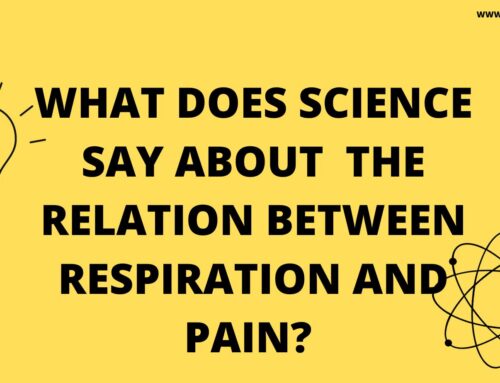There has recently been a surge in popularity of a type of rehabilitation service that some of us Physical Therapists are offering. The surge was a result of an article that was posted in
“Yahoo! Shine” about how actress Kim Cattrall claimed “Fizzy Yoga” saved her life. She was referring to “PhysiYoga”, a term that her Physical Therapist, Diana Zotos Florio, uses to describe her brilliantly combined skills and services of physical therapy and yoga. Since I also offer the same type of therapy services, which I label as “PhysioYoga Therapy” (a combination of physiotherapy and yoga), the reporter contacted me and included a quote from our interview. This has led to an influx of inquiries that has been nearly impossible for me to keep up with the replies, so I thought I would answer the most common questions here in this month’s blog!
What is PhysiYoga? PhysiYoga, PhysioYoga, Yoga Physio, YogaPhysical Therapy… are just a few of the titles you may come across when physical therapists (aka ‘physiotherapists’) define and label the art and science of combining their physical therapy (aka ‘physiotherapy’) skills as licensed healthcare professionals with their years of training in yoga or yoga therapy and ongoing personal yoga practise. All of these titles can be interpreted as offering similar services; however, each physical therapist may slightly differ in their approach depending on the type of yoga or yoga therapy training they have received and experienced.
So what is PhysioYoga?
I thought of this name several years ago, simply as a brand name for what I was doing: integrating yoga into my professional physiotherapy practice. As a collective group of physiotherapists who integrate yoga, we haven’t come up with a formal definition (or ever discussed or agreed upon what to even name what we do)! However, this is how I describe and define what I do: PhysioYoga Therapy is a type of rehabilitation therapy that combines Physiotherapy (synonymous with ‘Physical Therapy’) and Yoga Therapy. The combination of these two approaches results in a more holistic approach to your rehabilitation experience. Physiotherapy is a well respected rehabilitation healthcare profession that uses evidence-informed treatment methods to help clients restore and maintain optimal movement and function, reduce and manage pain, as well as provide education on health maintenance, wellness and injury prevention.
Yoga is an ancient system of health that encourages exploration and inquiry into the root causes of one’s suffering and struggle. Yoga includes the body, mind, breath and spirit as ‘one’ and not as separate aspects of one’s existence (much too simplistic of a definition of an ancient wisdom tradition and practice; but will have to do for this short blog). Yoga offers a framework for a holistic approach that promotes a balanced lifestyle of health and well-being.
Yoga therapy applies yoga philosophy and practices (including breathing practices, awareness practices, mindful movement, focus/concentration methods, meditation and more) to individuals that may be struggling with and suffering from certain conditions or issues.
The International Association of Yoga Therapists defines yoga therapy as: “the process of empowering individuals to progress toward improved health and wellbeing through the application of the teachings and practices of Yoga.” (Taylor 2007). For more information about the proposed mechanisms underlying how yoga works, read
HERE.
PhysioYoga Therapy differs from yoga or yoga therapy, because it is delivered by licensed physiotherapists. As physiotherapists, we have extensive training, knowledge, and clinical experience to assess, diagnose and create treatment plans for people who suffer from a variety of injuries or conditions. We also have training and the license to use manual therapy skills in addition to a variety of other methods as part of treatment intervention. PhysioYoga Therapy differs from traditional physical therapy intervention, because it uses yoga (as described above) to guide the treatment approach, which can result in a more holistic approach to healing. The focus is placed more on patient self empowerment and self healing.
One of the main reasons that PhysioYoga Therapy has been effective for my clients, I believe, is because it empowers people to have more autonomy and agency to create their own health, instead of the passive ‘fix it’ approach that our current health care system has a tendency to promote. The therapist is the guide and facilitator of recovery for the individual rather than the ‘fixer’ of the condition. Also, the framework of yoga allows for a more compassionate therapeutic interaction to emerge and enhanced therapeutic alliance, which can influence therapeutic outcomes.
What are the benefits of PhysioYoga Therapy? There are a plethora of benefits that can be experienced and enjoyed with this type of approach. However, my hope is that we all can appreciate that there are many factors that influence whether or not any form of treatment intervention has certain benefits associated with it. Therapeutic results can vary from person to person and can depend on pre-existing and current conditions, mind-body awareness, dedication to one’s practise, mindset, personality, current lifestyle situation, personal choices, and of course, the type of guidance being received from the therapist and the relationship between the therapist and patient. Remember this is a journey of self-discovery and wellness; not a one or two session ‘cookie cutter’ exercise program or series of yoga poses as a prescription for your specific condition!
Some of the benefits that PhysioYoga therapy can offer are:
Physically, it can improve muscular strength, endurance, flexibility, postural body and breath awareness, circulation, digestion, hormonal balance, respiration, immune function, bone strength, normalization of blood pressure and normalization of body weight. Mentally, it can improve alertness, concentration, sleep patterns; reduce stress and anxiety and improve one’s ability to relax. It may even help with self-regulation which may result in improved resiliency and more healthy responses to stress. There may also be social and spiritual (meaning, purpose, sense of peace) benefits that have been shown to be important determinants of overall health and well-being. This is just a small list of many more benefits that physioyoga, physiyoga, yoga therapy may offer. The key benefit is an overall state of health and well-being.
Some of the common conditions addressed are:
**It is important to note that PhysioYoga Therapy is NOT treating a condition, rather, it is addressing the PERSON that is experiencing symptoms and has a certain condition. There is a big difference between the two. We are facilitating the journey to health and well-being of PEOPLE, rather than ‘treating a diagnosis.’ It is “PhysioYoga for the person, not the diagnosis.”
That said, people who experience back and neck pain, other musculoskeletal injuries (shoulders, hips, knees, etc), chronic or persistent pain, osteoarthritis, osteoporosis, pelvic pain disorders, rheumatoid arthritis, diabetes, fibromyalgia, high blood pressure, Irritable Bowel Syndrome, migraines/headaches, pregnancy, anxiety, scoliosis, urinary stress or urge incontinence, may benefit from PhysioYoga Therapy.
It is worthy to note the role that PhysioYoga also plays in injury prevention and overall health and wellness! Dr. Timothy McCall, has recently published a list of 75 health conditions (updated July 2019: 117 Health Conditions Helped by Yoga) that yoga has benefited that has been supported by research. This is a noteworthy list. An entire organization and many dedicated individuals and groups have been working hard for several years, some for even decades, in efforts to bridge the gap between therapeutic yoga and our current healthcare system.
Here is a TEDx talk I gave demonstrating an example of how yoga can be integrated into healthcare after sustaining an Achilles Tendon Rupture: Watch HERE.
The International Association of Yoga Therapists (IAYT) was founded in 1989 and has continued to evolve as an organization that “supports research and education in Yoga, and serves as a professional organization for Yoga teachers and Yoga therapists worldwide” (
www.iayt.org). IAYT’s mission is to ‘establish Yoga as a recognized and respected therapy.’ IAYT has a directory of yoga therapists that you can search. However, not all members of IAYT are licensed health care professionals. And not all licensed health care professionals, or Physiotherapists, are members of IAYT. You can also search the directory for a Professional Yoga Therapist (variety of healthcare providers who are trained in the methodology of medical therapeutic yoga). You can sift through the directory and find which providers are physical therapists.
I also belong to a Facebook group called
“Bridgebuilders to Awareness in Healthcare.” We are a group that consists exclusively of licensed rehabilitation professionals worldwide that are passionate about “sharing ideas on how to deliver holistic healthcare and how to foster awareness of creating relationships with our patients and healing through yoga.” Physical Therapists/Yoga Therapists,
Chrys Crawford Kub and
Matthew Taylor, founded the group in 2011. It started with 4 rehab professionals, and has grown to over 400 members.
(addendum: as of Aug 2018, we are now over 1000 members)!
If you currently do not have a ‘
PhysioYoga‘ therapist in your area, stay tuned, because more and more physical therapists are integrating yoga or yoga therapy into their rehabilitation approach around the world!
*This article is not meant to act as medical advice, nor to replace your current treatment. Please seek clearance and guidance from your licensed healthcare professional prior to participating in any of the tips, advice, practices or movements mentioned in this article.





